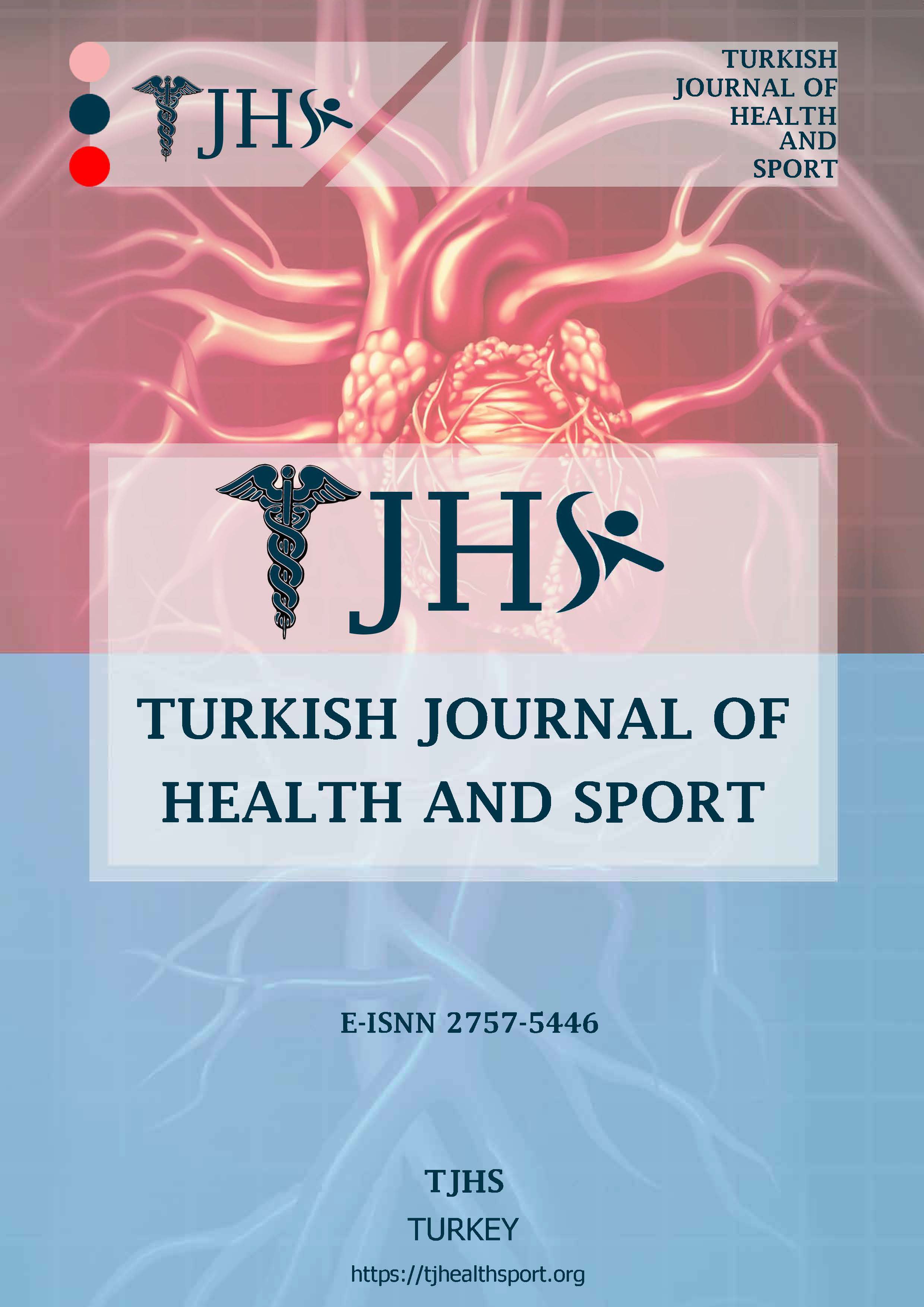Author :
Abstract
Amaç: Ortoreksiya Nervoza henüz bir hastalık olarak tanınmayan bir yeme bozukluğudur. Belirli gruplar dışında ON'nun yaygınlığı ve ilişkili faktörleri hakkında çok az şey bilinmektedir. Bu çalışmanın amacı, Türkiye'de özel bir üniversitenin çalışanları arasında ON yaygınlığını ve ilişkili faktörleri tanımlamaktır. Yöntem: Bu çalışma 144 çalışan ile gerçekleştirilmiştir. Veriler sosyo-demografik özellikler, antropometrik ölçümler, sağlık ve fiziksel aktivite durumu ve ORTO-11 ölçeği ile ilgili 17 soru içeren bir anket formu ile toplanmıştır. Bulgular: Üniversite çalışanları arasında ON yaygındı. Daha genç ve kronik hastalığı olan çalışanlar ON'a daha yatkındı. ORTO-11 skoru ile yaş arasında zayıf pozitif korelasyon vardı. Cinsiyet, medeni durum, vücut kitle indeksi ve sağlık sektöründe çalışma durumu ortoreksik olma ile ilişkisiz bulunmuştur. Sonuç: Genç çalışanların daha ortoreksik olmasının nedeni, gençlerin beslenme ile daha ilgili olması ve gençlik döneminin beslenme ile ilgili uygulamalar için daha avantajlı olması ile ilişkili olabilir. Ayrıca, kronik hastalığı olan çalışanlar, doktorlarının tavsiyelerinin de etkisiyle daha sağlıklı beslenerek sağlıklarına kavuşma umuduyla daha ortoreksik olma eğiliminde olabilirler.
Keywords
Abstract
Objective: Orthorexia Nervosa is an eating disorder that is not yet recognized as a disease. Little is known about the prevalence and associated factors of ON outside of certain groups. This study aimed to describe the prevalence of ON and related factors among the employees of a private university in Turkey. Method: This study was carried out with 144 employees. Data were collected with a questionnaire form containing 17 questions about the socio-demographic characteristics, anthropometric measurements, health and physical activity status, and ORTO-11 scale. Results: ON was common among university employees. Employees who were younger and had chronic diseases were more prone to ON. There was weak positive correlation between ORTO-11 score and age. Gender, marital status, body mass index, and status of working in the healthcare were found to be unrelated to being orthorexic. Conclusion: The reason why young employees were more orthorexic may be related to the fact that young ones were more interested in nutrition and the youth period was more advantageous for practices related to nutrition. Besides, employees with chronic diseases may tend to be more orthorexic in the hope of regaining their health by eating a healthier diet with the influence of their doctors' recommendations.





